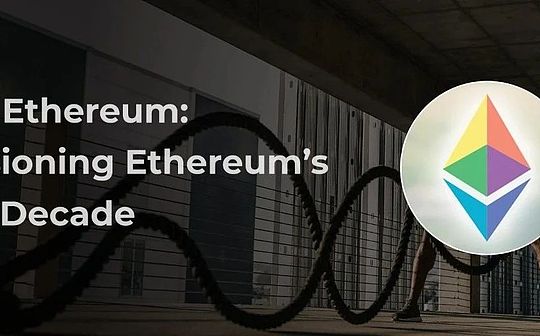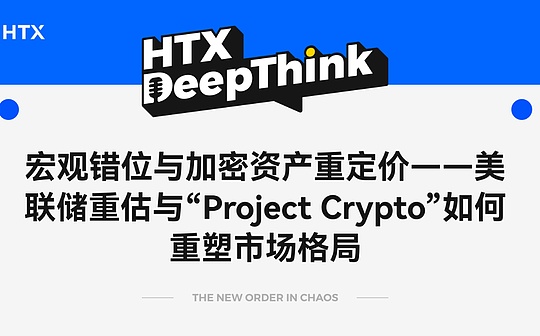
Author: Stefania Barbaglio, Source: Coindesk, Compiled by: Shaw Bitchain Vision
summary
-
Bitcoin’s on-chain circulation rate is at its lowest level in a decade, indicating that its use has shifted from currency to long-term asset holdings.
-
Institutional adoption has increased, with Bitcoin holdings in exchange-traded funds (ETFs) and corporate vaults significantly increasing, thus reducing on-chain transactions.
-
Off-chain activity, including the use of Lightning Network and Wrapped Bitcoin, shows that Bitcoin’s economic activity is more active than the on-chain indicators show.
Bitcoin’s on-chain transaction speed (i.e. Bitcoin’s circulation speed) is at its lowest level in a decade.In some people’s eyes, this is a red flag: Has Bitcoin lost its momentum?Is it still being used?
In fact, the decline in circulation is perhaps the clearest signal yet, indicating that Bitcoin is maturing rather than stagnating.Bitcoin is no longer circulating like cash, but is increasingly held like gold.
Functional transformation
In traditional economics, circulation speed refers to the frequency of currency change hands; it is an indicator of economic activity.For Bitcoin, it tracks the frequency of Bitcoin trading on the chain.In the early stages of Bitcoin’s development, Bitcoin was circulating very frequently as traders, early adopters, and enthusiasts tested its use cases.During major bull markets such as 2013, 2017 and 2021, trading activity surged, with Bitcoin moving rapidly between wallets and exchanges.
Now, things have changed.More than 70% of Bitcoin have not been moved for more than a year.Trading activity has declined.At first glance, this seems to indicate a decrease in usage.But in reality, this reflects another situation: firm confidence.Bitcoin is being seen as a long-term asset, not just a short-term currency.This shift is largely driven by institutions.
Mechanism adoption leads to supply lock
Since the launch of the US spot Bitcoin ETF in 2024, institutional holdings have increased significantly.As of mid-2025, spot ETFs held more than 1.298 million Bitcoins, accounting for about 6.2% of the total circulating supply.If the holdings of corporate treasury, private companies and investment funds are included, the total holdings of institutions are close to 2.55 million bitcoins, accounting for about 12.8% of all Bitcoins in circulation.Most of these assets remain unchanged and are stored in cold wallets as part of a long-term strategy.Companies like Strategy and Tesla did not use their Bitcoins, but held them as strategic reserves.
This is good for scarcity and price, but it also reduces the circulation speed: the amount of coins in circulation decreases, and transactions occurring on-chain decrease.
Off-chain usage is increasing and it is harder to detect
It should be noted that the on-chain circulation speed cannot cover all economic activities of Bitcoin.
The on-chain circulation speed can only indicate some of the situation.Today, the real economic activity of Bitcoin is increasingly happening outside the basic layer and beyond the scope of traditional measurement methods.
Taking Lightning Network as an example, it is Bitcoin’s second layer expansion solution, which can completely bypass the main chain and achieve fast and low-cost payments.From streaming micro payments to cross-border remittances, Lightning Network has enabled Bitcoin to be used in daily scenarios, but its transactions are not reflected in circulation speed indicators.As of mid-2025, Lightning Network’s public capacity has exceeded 5,000 bitcoins, up nearly 400% since 2020.The growth of private access and institutional trials show that the actual number is much higher.
Similarly, Wrapped Bitcoin (WBTC) enables Bitcoin to circulate on Ethereum and other chains, providing power for decentralized finance (DeFi) protocols and tokenized finance.In the first half of 2025 alone, the supply of WBTC increased by 34%, which clearly shows that Bitcoin is being used, not idle.
Then there are custody issues: Institutional wallets, exchange-traded funds (ETFs) cold storage, and multisig financial tools allow businesses to safely hold Bitcoin, but they usually don’t transfer them.These coins may have important economic significance, but they have no contribution to the speed of on-chain transactions.
In short, Bitcoin may be more active than it seems on the surface, but this activity occurs outside the traditional velocity indicators.Its utility is shifting to new levels and platforms – payment channels, smart contract systems, and income strategies – none of which are reflected in the traditional circulation speed model.As Bitcoin evolves into a multi-level monetary system, we may need new ways to measure its momentum.The decrease in on-chain circulation speed does not necessarily mean that the amount of use is decreasing.In fact, this may just mean we are looking in the wrong direction.
The trade-offs behind low trading speed
While slow trading speeds indicate firm investor confidence and long-term holding, it also presents challenges.Reduced on-chain transactions mean fewer fees for miners: This has become an increasingly serious problem after the 2024 block reward halving.Bitcoin’s long-term security model relies on a healthy fee market, which in turn requires ongoing economic activity.
Another question is what people think.In a network where few coins are circulating, it may start to look more like a static vault than an active market.This may reinforce the argument that Bitcoin is “digital gold”, but weakens its vision as a circulating currency.
This is the core design contradiction: Bitcoin aims to be a means of storage of value (digital gold) and a medium of exchange (peer-to-peer cash).But these two roles are not always in harmony.The velocity of circulation is an indicator of this push-pull relationship, and this ongoing struggle between value preservation and practicality, and how Bitcoin responds to this situation, will not only affect its usage patterns, but also determine its role in the broader financial system.
Sign of maturity
Ultimately, the decline in Bitcoin’s circulation speed does not mean that it is used less frequently.This shows that the way people use Bitcoin has changed.As Bitcoin’s value increases, people tend to save it rather than spend it on consumption.As it is widely adopted, infrastructure has gradually moved off-chain.With the addition of institutions, their strategies focus more on preservation rather than circulation.The Bitcoin network is evolving.The circulation speed has not disappeared, but has become less active, reshaped by the ever-changing user groups and new levels of economic activity.
If the transaction speed rises again, this may mark the rise of transactional use again; consumption increases, capital flows accelerate, and retail participation increases.If transaction speeds continue to be sluggish, it means that Bitcoin’s role as macro collateral is deeply rooted.In either case, transaction speed provides a window of view for the future of Bitcoin.It is not as a currency for consumption, but as a constructable asset.








